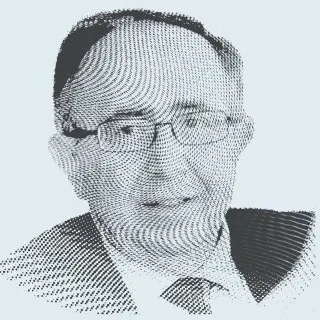Yehya al-Sinwar wasn’t born yet when memories of the Nakba rattled Palestinians living in Cairo, Kuwait, Qatar and other places. They carried out secret contacts to determine whether they could unite to wage a battle to reclaim all the territories,
Al-Sinwar was three years old when Farah fired its first shot on January 1, 1965. After that, the world would remember the names of the founders: Yasser Arafat (Abou Ammar), Salah Khalaf (Abou Iyad), Khalil al-Wazir (Abou Jihad), Farouk al-Qaddumi (Abou al-Lutf), Mahmoud Abbas (Abou Mazen) and others. Arafat, Khalaf and al-Wazir came from a Muslim Brotherhood background, al-Qaddumi from the al-Baath and Abbas didn’t have a partisan background. The members of the Fatah circle set aside their past affiliations to focus on national resistance.
Al-Sinwar was four years old when al-Qaddumi visited Syrian Defense Minister Hafez al-Assad for a meeting that culminated in the release of Arafat from prison where he was held for 51 days. Soon after, Arafat will be held prisoner in Beirut for his involvement in a resistance operation that was launched from Lebanon.
Al-Sinwar was five years old when Israel waged the 1967 war and turned parts of neighboring countries hostages that it wouldn't release before receiving an acknowledgement of its right to exist.
He was six when Israeli forces nearly arrested an infiltrator called Yasser Arafat. That year, the Battle of Karameh took place in Jordan. The fight would allow Fatah to take on the task of leading the Palestinian struggle and pave the way for a victory-sign wielding Arafat to visit Arab and world capitals.
Al-Sinwar was eight when Dr. Wadih Haddad, comrade of George Habash in the Popular Front for the Liberation of Palestine, shocked the world when he hijacked three planes and led them to Jordan’s “revolution airport” in 1970. That same year, the Arab summit would dispatch a senior delegation to release Arafat, who was besieged in Amman.
In all likelihood al-Sinwar probably remembers what happened in Beirut in 1982. He was 20. General Ariel Sharon’s forces tightened their siege of the Lebanese capital and bombarded it from land, sea and air. Arafat didn’t take long to realize the harsh truth. The Soviet Union wasn’t prepared to deliver a warning, not even send a ship to transport the wounded. Egypt was unable to abandon its Camp David commitments. Syria, whose forces fought fiercely in Lebanon during the first days of the invasion, was unable to open the Golan front.
Arafat was in no way willing to listen to Moammar al-Gaddafi, who encouraged the Palestinians to commit suicide in Beirut. He had no choice but to seek a mandatory party, the United States, to lessen the damage and improve his conditions. Habash, for his part, had to acknowledge that his dream of turning Beirut into a new Stalingrad was just a dream.
The siege of Beirut is certainly different than the siege of Gaza. We are talking here about two different arenas and two different time periods. We are talking here about a period that witnessed the death of the greatest casualty of the 20th century: the Soviet Union. It was killed by old age, not a bullet.
Are there similarities between two situations that are separated by four decades of history during which the world changed dramatically and the Palestinian wound continued to fester? Can Hamas seek the same path as Arafat? Is it acceptable? Can Hamas follow the Palestine Liberation Organization and respect its commitments? Can it stand behind Abbas, knowing that the accepting the two-state solution necessarily means recognizing the other state that is Israel? Is al-Sinwar facing the same questions that confronted Abou Ammar in Beirut? Russia, which is present in Syria, is not prepared to deliver a warning, which would spark a major international crisis, for the sake of Gaza.
We can say that Iran prefers to offer support by proxy, not by direct involvement. Does al-Sinwar hold a card to stop the war, even if it meant releasing the hostages in exchange for saving Gaza from complete and total destruction? Does he have the cards that would protect Hamas from the “next day” scenarios that effectively take it out of the equation?
Al-Sinwar was serving four life sentences behind bars when the Oslo Accords were being cooked up in Tunisia by Abou Mazen, Abou Alaa, Yasser Abed Rabbo, Mohsen Ibrahim, Mahmoud Darwish and others under Abou Ammar’s leadership. They held difficult discussions. They must pay a hefty and unavoidable price in order to return the Palestinian cause to its territories. It was a soul-crushing price that meant accepting a smaller dream and fewer lands.
When Fatah fired its first shot, Arafat and his comrades wanted what al-Sinwar wanted today: “All territories”. But the balance of power is merciless and time is threatening both the dream and the territories. In the end, they agreed to obtain a “foothold in the backyard of the house”, as described by Darwish.
In his prison, al-Sinwar learned about how Arafat shook hand of Yitzhak Rabin at the White House. He learned that Hamas and “Jihad” launched waves of suicide operations to scuttle attempts to undermine the Oslo Accords.
Benjamin Netanyahu boasts about undermining the two-state solution. He says the Oslo Accords were an error that would not happen again. We must wait to find out whether the current Gaza war would be the final battle before the two-state solution is adopted or whether it would pave the way for a greater more dangerous confrontation.
The question remains: What is al-Sinwar thinking about? What lessons has he derived from Abou Ammar’s experience?











